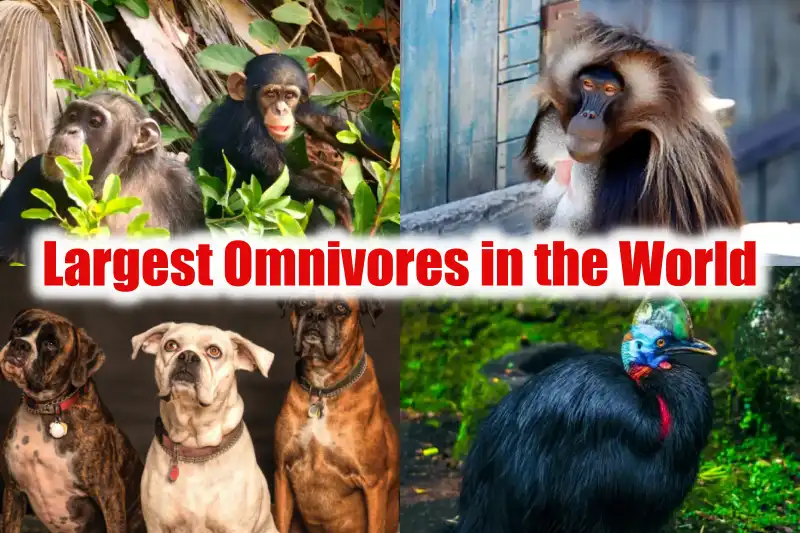Food is one of the essential components for the survival of an organism. Quite a large number of animals have a diet that lies in both spectrums, i.e., they consume plant as well as animal matter. For a few days, a common question, which is the largest omnivore in the world, has kept surfacing. To address this question, we bring to you our today’s article, Top 10 Largest Omnivores in the World (Biggest Omnivores 2024).
Top 10+ Largest Omnivores in the World
11) Dogs

Size- 15- 110 centimeters (Largest Breed: Great Dane)
Scientific name- Canis familiaris
Descendants of the wolves, which are carnivorous, dogs, due to their living in human proximity, have developed into omnivores. Though the species variation is huge, dogs like the Siberian Husky, Malamute, German Shepherd, Doberman, Rottweiler, Mastiff, and St. Bernard are large and strong dog breeds.
Being man’s best friend, they have become quite adept in consuming omnivorous foods, as per their nutritional requirements. Dogs primarily feed on meat products, milk, eggs, and also vegetables like carrots, beans, etc.
10) Chimpanzees

Size- 150 centimeters
Scientific name- Pan troglodytes
Widely known as the closest relative to humans, Chimpanzees rank 9th in the list of Largest Omnivores worldwide. These species of Great Apes from the Savannah rainforests are typically 150 cm tall when standing as adults (4 ft 11 in).
Wild mature males are heavier than females, weighing 88-154 lb (40-50 kg) and 27- 50 kg (60-110 lb), respectively. Individuals in captivity are slightly larger than those in the wild.
Chimpanzees primarily consume fruit, leaves, and buds, although they occasionally hunt other smaller primates like red-tailed monkeys, bush infants, common warthogs, etc.
9) Gelada
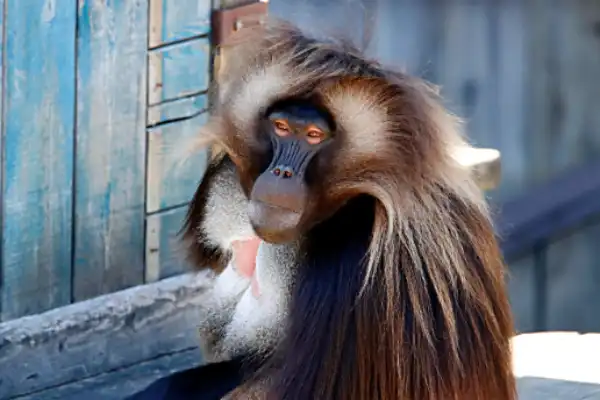
Size: 2.5-4.5 ft
Scientific name: Theropithecus gelada
The Gelada, sometimes referred to as the bleeding-heart monkey or gelada baboon, is a rare species of primate that lives in Ethiopia’s highlands. The “bleeding heart” nickname originates from the red skin patch on the Gelada’s breast, which is one of its most remarkable characteristics.
Among primates, geladas are distinct in that they are mostly grass grazers, consuming mostly the blades, roots, and seeds of grasses with sporadic additions of fruits, flowers, and insects.
Geladas can number in the hundreds when they forage in huge groups. This social behavior helps them to efficiently locate and exploit food resources while providing safety in numbers against predators.
8) Cassowary
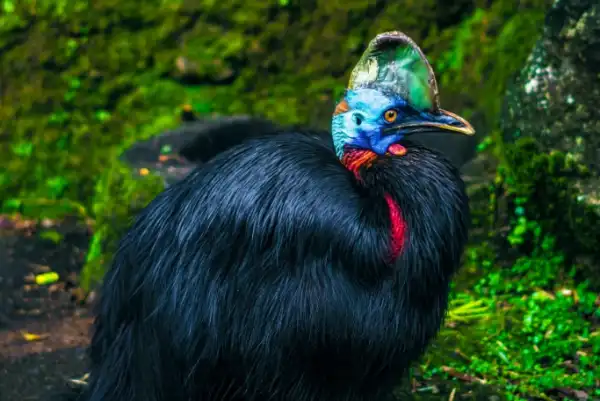
Size- 1.5-2 meters
Scientific name- Casuarius sp.
Next up on our list of the Largest omnivores in the world we have the Cassowary. These Australian birds are pretty shy and live in dense forests. Cassowaries are one of the closest relatives to dinosaurs. Although some females may reach 2 meters (6.6 ft) in height, adult male southern cassowaries are 1.5 to 1.8 m (5 to 6 ft) tall, weighing 58.5 kilograms (130 lb).
They have sharp claws that may reach lengths of 5 inches. Cassowaries can attack humans and animals with a kick, which is one of the strongest in the animal world. They consume fruit primarily, but they also devour mice, birds, snails, etc.
Cassowaries resemble prehistoric creatures in their unusual appearance. Their strong legs and pointed claws are evocative of theropod dinosaurs, the group of dinosaurs that includes famous species like Tyrannosaurus rex and Velociraptor.
7) Emu
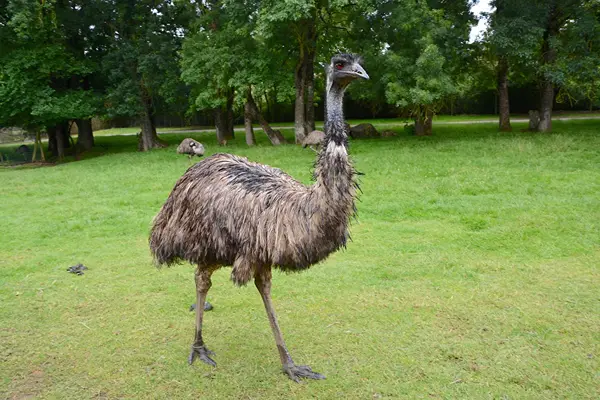
Size- 6.2 feet
Scientific name- Dromaius novaehollandiae
Emus are brown, flightless birds with long necks and legs and can grow as tall as 1.9 meters (6.2 feet). Emus are capable of traveling long distances with speeds of 48 km/h. They weigh between 18 and 60 kilograms (40 and 132 lb) as adults, with a male and female average of 31.5 and 37 kg (69 and 82 lb), respectively.
The diet is based on seasonal availability, favoring plants like grasses, acacia, and casuarina. Among arthropods, they consume grasshoppers, cockroaches, crickets, cotton-boll moth larvae, ants, spiders, and millipedes.
Since emus’ meat is rich in protein and low in fat and cholesterol, it’s becoming more and more popular around the world as a healthy alternative for people who want to consume more lean meats. It also contains essential vitamins and minerals, including iron, zinc, and Vitamin B.
6) Tapanuli Orangutans
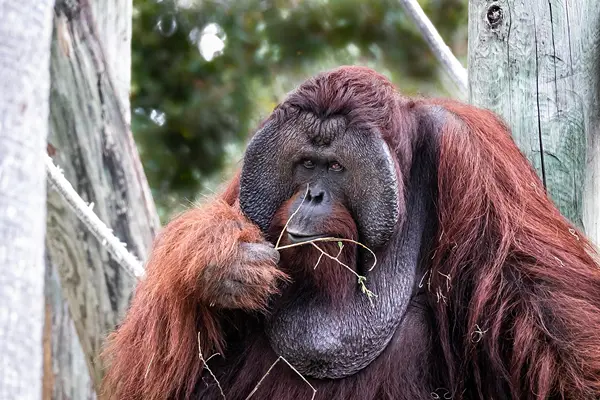
Size- 137-110 centimeters (54-43 inches)
Scientific name- Pongo tapanuliensis
The Tapanuli Orangutans are an endemic species to South Tapanuli in Sumatra and are one of the largest primates. Males are taller and heavier than females; they stand 137 cm (54 in) tall and weigh 70–90 kg (150–200 lb), compared to females, who stand 110 cm (43 in) tall and weigh 40–50 kg (88–110 lb).
Tapanuli Orangutans are exclusively arboreal and feed on leaves, buds, fruits, caterpillars, and sometimes even slow lorises. With less than 800 individuals left in the wild, it is one of the most endangered primate species.
5) Ostrich
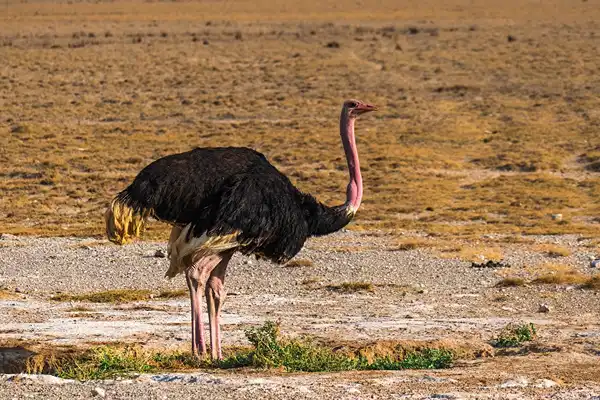
Size- 2.1-2.8 meters
Scientific name- Struthio sp.
The following species in our list of the Largest omnivores in the world we have is the Ostrich. With heights ranging from 2.1 to 2.8 m and weighing 100 kg or more, the Ostrich is the largest bird in the world.
Their diet comprises grasses, fruits, shrubs, flower insects, and small reptiles and mammals. Ostriches, with the largest eyes in the world, possess an acute vision that helps them to spot predators from afar. Long powerful legs provide them with high speeds and also deliver immensely strong kicks, that can even fatally injure large carnivores like lions.
4) Wild Boars

Size- 63 – 120 centimeters (height), 90 – 200 cm (length)
Scientific name- S. scrofa
The wild boar has short, relatively narrow legs and a powerfully developed bulky body. Depending on the area and species, they can weigh anywhere from 100 to 300 kg or even more. The trunk is short and sturdy.
Their heads are meant for digging, which helps them to consume tubers, root bulbs, fruits, berries, grasses, nuts, and even eggs, frogs, and carcasses. They are quite strong beings, and in many places, due to the absence of any natural predator, wild boars become invasive and cause immense ecological damage.
3) Bears
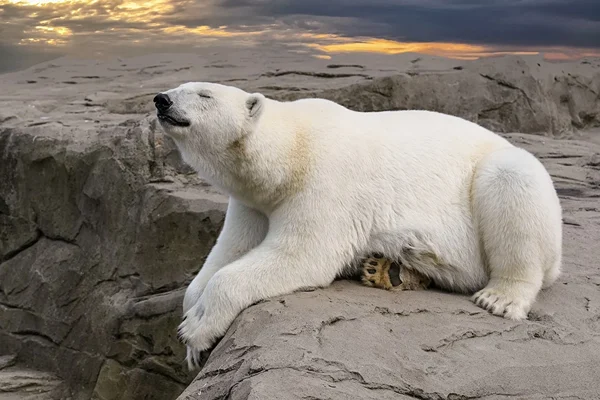
Size- 4-8 feet long (Largest species: Polar Bear and Kodiak Bear)
Scientific name- Ursus sp.
Among all the animals, bears exhibit the best omnivorous diet. They are large bulky animals, though the size differs depending on the species, with the Kodiak Bears being the largest.
The diet of a bear changes concerning the season and also the type of food available. While they primarily feed on berries, fruits, grasses, etc., they will also eat young fawns, seals (only by the Polar Bears), fishes like salmon, and insects for proteins.
2) Hippos
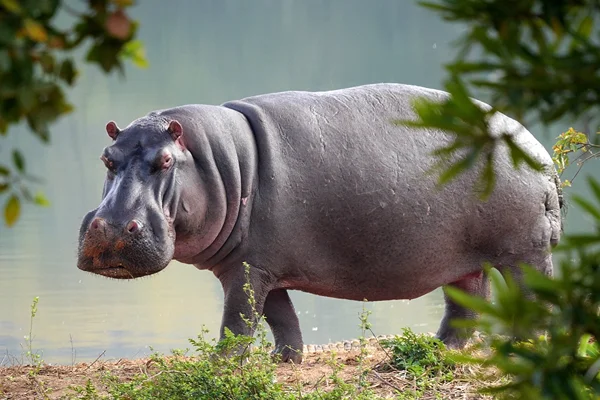
Size- 1.3-1.6 meters (height), 3-5 m (length)
Scientific name- Hippopotamus amphibius
The hippopotamus is one of the largest land animals and is, undoubtedly, one of the largest omnivores in the world. They have a barrel-shaped body, with a wide opening mouth featuring their large canine tusks.
They weigh, on average, 1350-1500 kg, with males sometimes exceeding 2,600 kilograms. Though plant matters comprise a significant portion of their diet, they sometimes become carnivorous like the Hippos in the South Luangwa River in Zambia.
1) Whale Shark
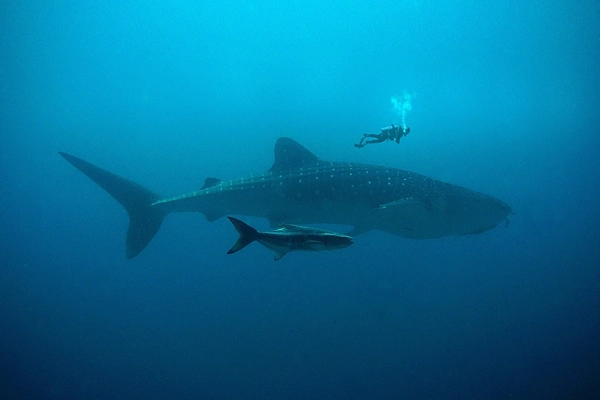
Size- 8-12 meters
Scientific name– Rhincodon typus
The first animal on this list of Largest Omnivores in the world is the largest living fish, the Whale Shark. They may grow up to 18 meters but, on average, lie in the range of 8-12 meters.
The whale shark hunts for prey at or near the ocean’s surface and is well suited to filter feeding, thanks to its big mouth.
They consume phytoplankton (plant material) and zooplankton, like copepods, shrimp, and other invertebrates. Whale Sharks also consume a broad spectrum of fish like mackerels, tunas, squids, and anchovies.
Digestive Adaptations of Omnivores:
Omnivores’ digestive systems are designed to process a wide variety of food sources effectively. They typically have a combination of teeth like the incisors for cutting, canines for tearing and molars and premolars for grinding and crushing. This allows them to consume a variety of food types, including plant material and meat.
Their saliva consists of an enzyme, the salivary amylase, that helps in the initial breakdown of carbohydrates. The stomach secretes enzymes that digest both, proteins from animal matter and carbohydrates from plants.
In some omnivores, such as humans and certain primates, the large intestine also houses bacteria that aid in the fermentation of fiber and the production of certain vitamins, such as vitamin K.
Here we conclude our article, Top 10 Largest Omnivores in the World (Biggest Omnivores 2024). We will be bringing many more such articles shortly, so stay tuned for more.
FAQ:
1) What is the strongest omnivore on land?
Ans. Hippos and Brown Bears are two of the most formidable land omnivores. However, in a direct confrontation, Brown Bears will have the upper hand and are therefore the strongest and also the largest omnivores on land.
2) Are humans omnivores?
Ans. Humans are omnivorous species. We feed on both plants as well as on animal matter. Humans are the apex omnivores, who consume small microorganisms too largest living beings on the planet, the whales.
(Ref: https://education.nationalgeographic.org/resource/omnivore/)
3) What is the smallest omnivore?
Ans. Ants are the smallest omnivores on the planet. Ants will feed on anything, from plant matter to insects, flesh, and anything that may be lying around.
Also Read:

A zoology student turned writer. Nature has always been a magnet to me, and to unearth some of its secrets through my articles is my prime intention. If not engaging myself with nature and anime content, you can always find me going through some Bengali classics or filling the air with some soulful Tabla beats. An artist, trying to throw some colors to my blank canvas of life.
